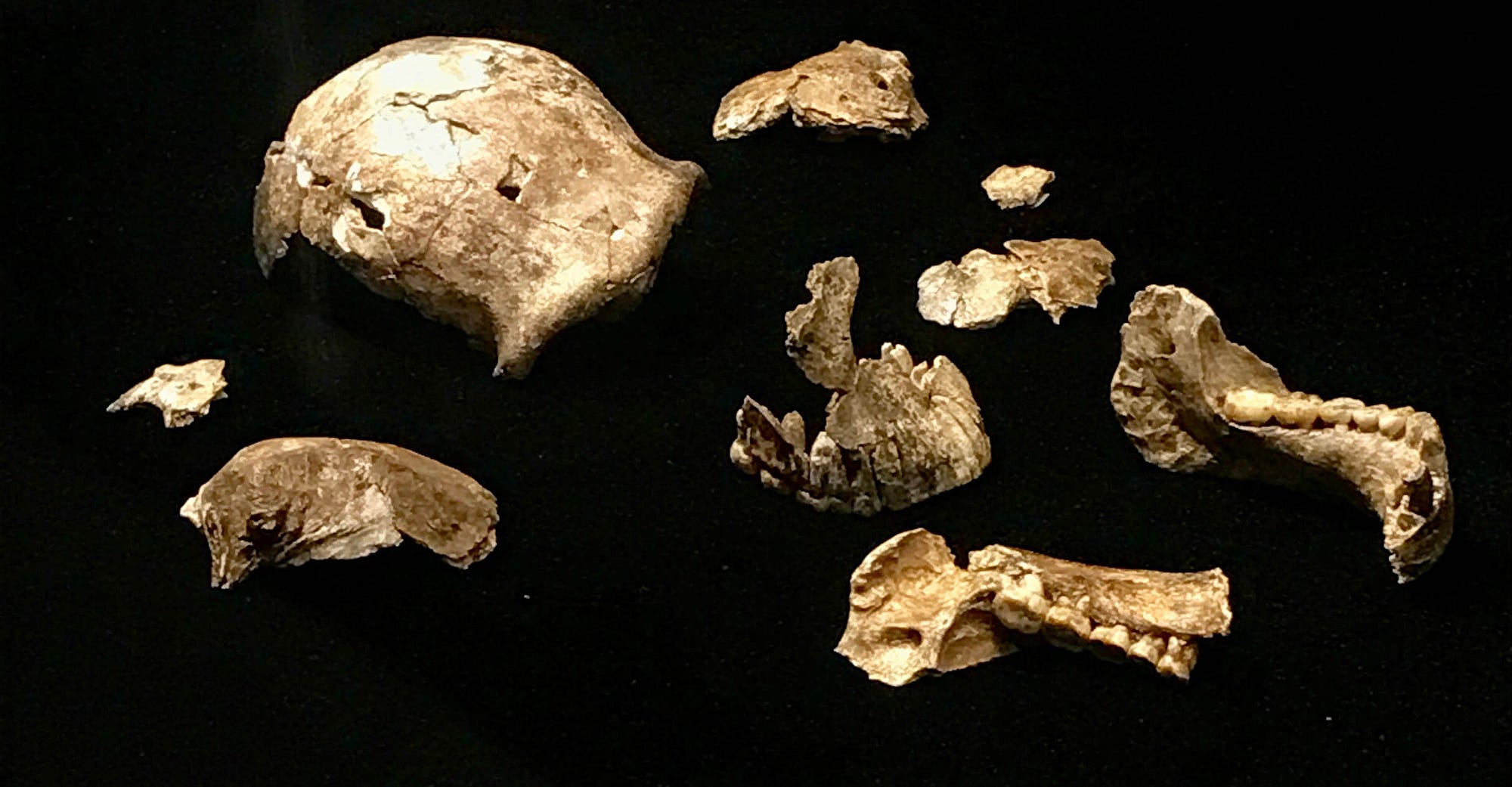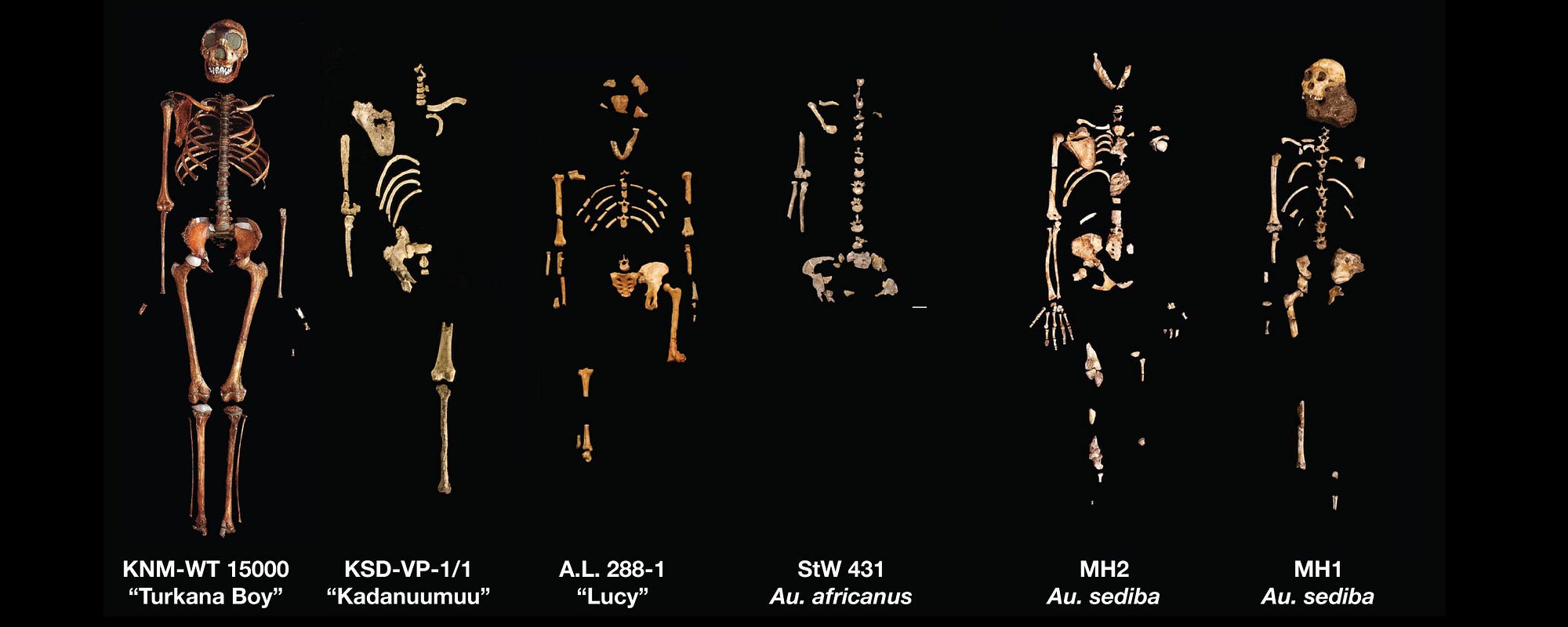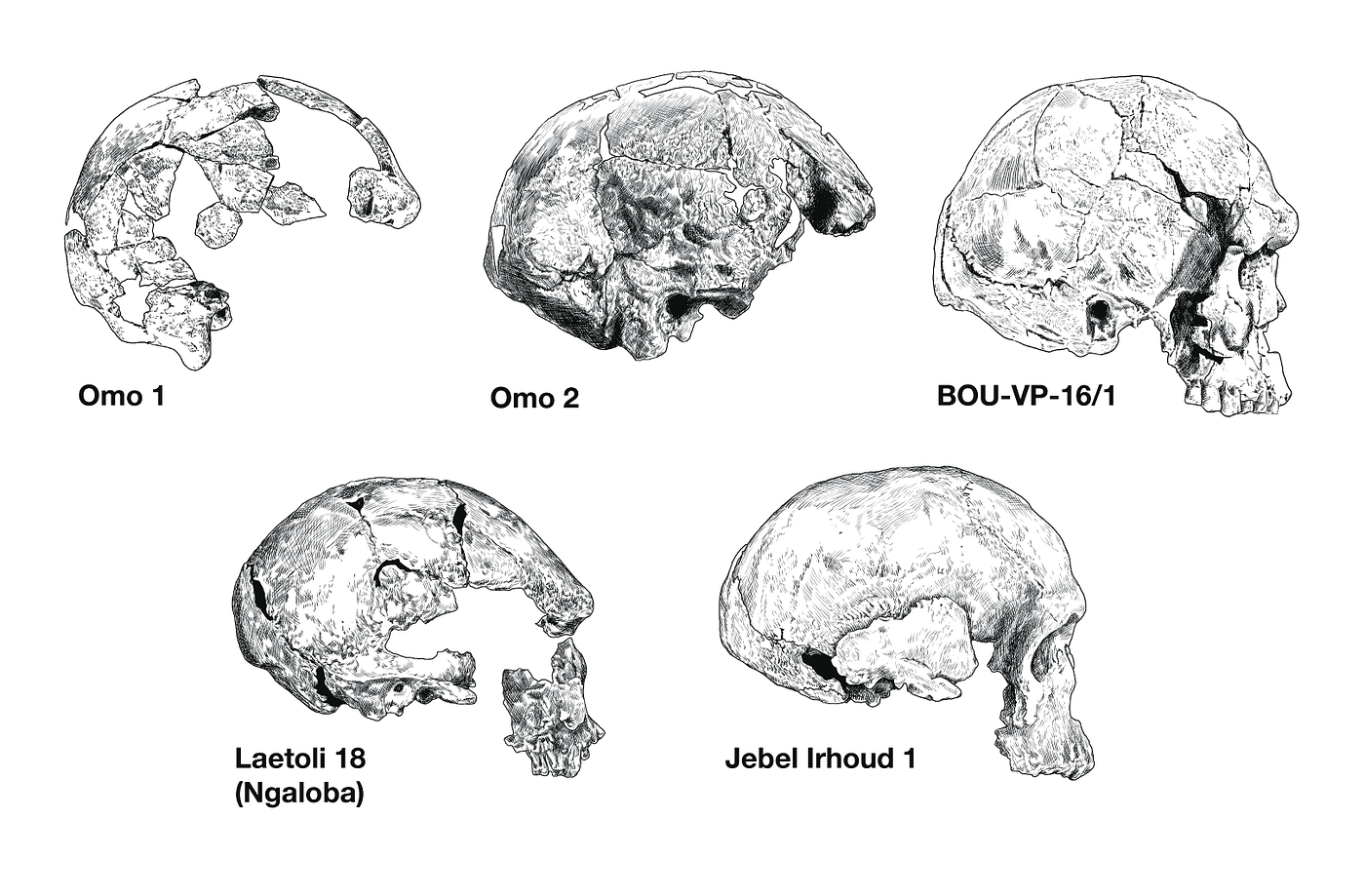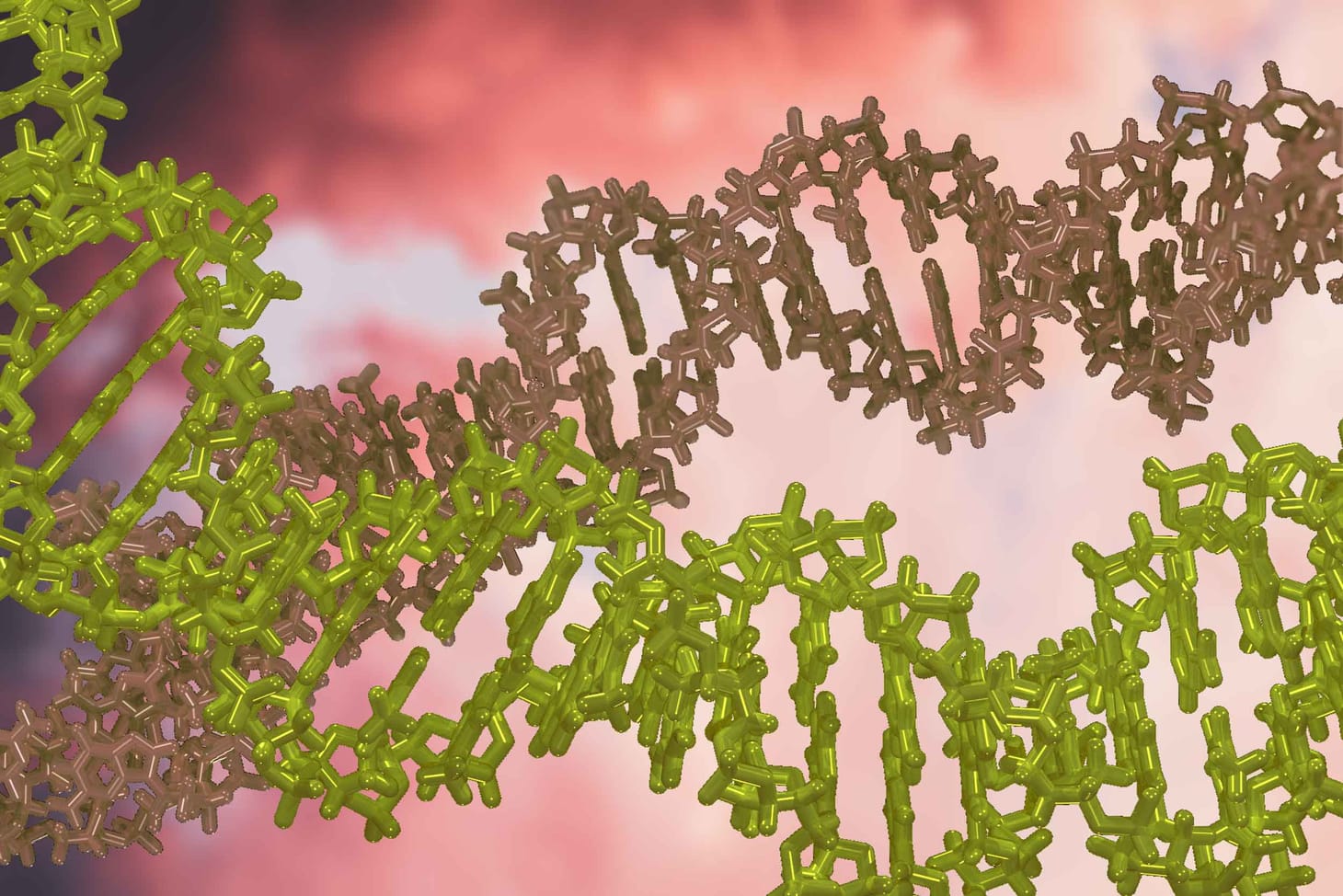Three big insights into our African origins
Recently, I delivered a lecture to the American Society for Human Genetics, focusing on the African record of human origins. It was a great privilege to speak to more than 5000 members of this professional organization, together with other distinguished experts on African genetic variation and health. Here I share my talk in edited form.

I want to begin by thanking the ASHG, in particular President David Nelson, for opening this year’s Presidential Symposium on the impact of human evolution in Africa. In the history of this science we are now witnessing a remarkable moment. New datasets are raising questions we never thought about before, questions about the continent of our shared origins.
This symposium is going to take you to the field, to some of the newest archaeological and fossil discoveries. Himla Soodyall, from the University of the Witwatersrand, will be looking from the present into the past. She will tell us about the way that genetic variation in Africa can reveal secrets about the populations that gave rise to today’s people. She’ll also share a bit about recent ancient DNA results from the continent.
Ambroise Wonkam of the University of Cape Town will be sharing some of the ways that our developing knowledge about the genetic variation of the peoples of Africa has become central to understanding health, disease, and potential new treatments. After these presentations, we will have a panel discussion, moderated by Charles Rotimi from the National Human Genome Research Institute and Sarah Tishkoff, of the University of Pennsylvania. This is an all-star lineup. I want to thank all the participants for their engagement and willingness to share their expertise in this symposium.
Himla and Ambroise will talk about the diversity of Africans today, and Sarah in her presentation yesterday was also able to give some perspective on the amazing genetic story. I will focus on the fossil record and archaeology.
For my part, I will share three insights that have come from the last fifteen years of discoveries.
First, for a moment I want to take you with me, to where I was just five years ago. If we go back to October 2013, you’ll find me looking at the first images of unknown fossil material from the Rising Star cave system. You’re looking at those images here, taken by Steven Tucker and Rick Hunter. They were out in this cave system together, exploring for fossils.
Lee Berger, my good friend and National Geographic Explorer, was organizing a remarkable expedition to investigate what Steve and Rick had found. The fossils were deep within a cave chamber reachable only through a seven and a half inch passage, down a 40-foot climb. Within a month the team was underground, six remarkable archaeologists excavating for 21 days. They would recover the largest assemblage of fossils of ancient human relatives ever found in Africa. There were the remains of at least 15 individuals, every part of the body represented, all ages from infants to old adults.
The fossils were stunning. As we saw them come out of the ground, every piece revealed a deeper and deeper mystery. What were they? What could explain their remarkable context — deep in this cave, alone without the bones of other animals?
I work in two different spheres of science. I trained as a paleoanthropologist, working with the fossil bones of Neanderthals and other ancient peoples. I’ve studied tens of thousands of skeletal remains, modern and fossil, from all over the world. But to be honest, twenty years ago Neanderthals did not look like a growth area of science. Fossil hominins were some of the rarest and most valuable objects on the planet, and in those days, the people who found them were very secretive. It became very clear to me as a student that I was unlikely to do great original work by focusing on the handful of specimens that I could get permission to study.
So during my PhD, I made a transition to work in population genetics. In that sphere, I became interested in the relationship between natural selection and demography. After the Human Genome Project generated its first rough draft, new genetic projects like the HapMap and 1000 Genomes Project started to explore genome-wide human diversity within populations. I led studies looking at what we could say about ancient population sizes and how natural selection had been adapting us to new agricultural environments. I also started writing about what genetic input from Neanderthals might look like of it still existed in today’s populations.
It was exciting when Ed Green, Johannes Krause, and others from Svante Pääbo’s group first obtained genomic data from Neanderthals, and then from other archaic humans. For me, ancient genomes brought together two worlds. The fossil record was now directly relevant to what geneticists were finding.
In the last eight years, the science of ancient DNA has been exploding. Today we talk about the biology of archaic people in ways we could never have examined from the fossil record. People are examining immunity, disease, blood oxygenation, even circadian rhythms. Hundreds of scientists are coming fresh into human evolution to examine such questions. This influx of scientists is providing new applications of human evolution to the biology of living humans. The NIH is funding work on evolution.
The explosion of importance of ancient DNA has taught us just how valuable is every single fossil, even tiny finger bones that we used to treat like curiosities. It’s those primary data, the fossil discoveries, that make all this work possible.
And so, I went back into the field.
You might say, wow, that’s a drastic move. But look, it is pretty hard to compete in bioinformatics with thousands of eager young postdocs, just like many of you in the audience.
Even more important, now more than ever, we need to build more primary datasets. For human evolution, the most critical need is for more fossils. What is so exciting, what I have to relate to you today, is that the last decade has seen a massive expansion of knowledge in the hominin fossil record. I’ve been very fortunate to contribute to both genetic and fossil approaches in this unprecedented moment.
Let me share with you a brief perspective from deep time.
Our own species and its ancestors lived across a vast time span that we rarely think about in our everyday lives. Chimpanzees and bonobos are our closest living relatives, and our branch separated from theirs sometime between 5 and 10 million years ago. That’s the span of a hundred thousand human lifetimes, 300,000 human generations. We call the branch of primates that led to us the “hominins.”
Ancient genetic data, which are amazing, go back at most to 450,000 years ago at Sima de los Huesos, Spain. So for 90 percent of our evolutionary record, fossils and stone artifacts are all we have to work with. Within Africa, the oldest DNA sequences we have directly from ancient bones are a lot younger, within the last 30,000 years.
The first third of our evolutionary history is poorly known. Paleontologists have found a handful of fossils that might represent the first members of our branch. With names like Sahelanthropus and Ardipithecus, those fossils show some signs of a more upright posture than other apes. They also have smaller canine teeth than other apes. The canines are important for social communication, especially threats. Small canines may reflect changes in social structure.
From the second third of our evolutionary story we know much more. After 4 million years ago we have lots of hominin fossils, mostly belonging to species from a genus that we call “Australopithecus”. The pelvis, the legs, the feet, spine and skull of Australopithecus were adapted for upright bipedal walking. The famous “Lucy” fossil skeleton was a member of one of these species, Australopithecus afarensis. That skeleton is from Ethiopia, 3.2 million years old. Two other species, Australopithecus africanus and Australopithecus sediba, existed in South Africa during the time between 3 and 2 million years ago.
When we say “Australopithecus”, we are talking about a whole mode of life that no longer exists. They averaged smaller in body size than today’s humans. Their brains were also much smaller than ours, only around a third the size. Compared to us, they had big molar and premolar teeth. Their canine teeth weren’t as small as ours, but they were nothing like the big, dimorphic canine teeth of living great apes.
There were other hominins who lived during this time, too. The “robust” Paranthropus had gigantic molar and premolar teeth that leave the big molars of Australopithecus in the dust. Paranthropus lived from around 3 million up to a million years ago or less. A handful of very fragmentary fossils before 2 million years ago might represent early members of our own genus, Homo.
In other words, a diversity of hominin species once existed. Our tree was “bushy”. In the time before 2 million years ago, we haven’t yet found any fossil trace of hominins anywhere other than Africa. Our lineage had an African origin, it had a diversity of adaptations to ancient African environments, and for two thirds or more of this history, it appears that our ancestors and relatives were exclusively African.
Mind you, we might still find something unexpected. We’ve been doing a lot of that lately.
The final third of our evolution, the last two million years, was a time when our genus dominated the scene. Homo included some colonizing species that expanded into new ecological roles, similar to “invasive” species today. Their new ecologies included geographic areas outside their original home continent. By 1.8 million years ago, Homo erectus lived in the region that today belongs to the Republic of Georgia. In China, erectus or some other hominin was there even earlier. They left stone artifacts 2.1 million years ago that archaeologists announced just this year. Homo erectus arrived in Java more than 1.5 million years ago.

Compared to Australopithecus, erectus was larger and had legs made for moving greater distances. These traits made erectus less dependent upon close cover and water sources. Their brains were 30 percent or more smaller than humans today, but still larger than any species of Australopithecus.
When people talk about this phase of human evolution that began two million years ago, they nearly always focus on stories of colonization. The story you hear is that hominins left Africa. I’ve seen it hundreds of times, from scientists as much as from journalists. What gets lost is that the mainstream of human evolution remained African this entire time.
Within Africa, during this same period from 2 million up to around 800,000 years ago, was an impressive diversity of hominins. Homo erectus was there: first in South Africa as early as 1.8 million years ago, later across much of Africa: Kenya, Ethiopia, Eritrea, Tanzania, and Morocco.
Anthropologists have found at least two other species of Homo in Africa from before 1.6 million years ago: Homo habilis and Homo rudolfensis. They were like Australopithecus in size and many features, but with a bit larger brains. Anthropologists have imagined these species as ancestors of erectus. We now know they existed for some time with erectus in the picture.
During this same time Paranthropus survived, and for a while thrived. The latest known evidence of a “robust” species comes from South Africa, less than a million years ago.
Up to this time in prehistory, genetics has not informed our story much. I believe there is great promise, using what we know about later populations’ genetics to make new inferences about earlier ones. Anthropologists like me are just getting started with this kind of work. The starting point is among the common ancestors of the ancient and modern genomes.
Some 600,000 to 700,000 years ago, the ancestors of the Neanderthals and Denisovans parted ways with African ancestors of modern humans. All three of these branches later contributed to the gene pool of living people. But the African branches predominated. From ancestral Africans all humans today derive at least 90% of their DNA. Some groups of Neanderthals combined to lend up to 3% in some living populations, and some Denisovans up to 5% in some parts of the world.
That date, between 600,000 and 700,000 years ago matters for what it’s not. It’s not 1.8 million years. The first Homo erectus invaded Eurasia more than a million years before Neanderthals and Denisovans parted ways with Africans. The story of Neanderthal and Denisovan origins seems itself to be African. They seem to have rapidly invaded Eurasia in much the same way that modern humans did more than a half million years later.
And what happened to Homo erectus? If erectus wasn’t the main ancestor of Neanderthals and Denisovans, some erectus populations may still have contributed a small fraction of their ancestry, in the same way that Neanderthals contributed a bit to later modern humans. The presence of a “ghost” contribution to the Denisova genome itself suggests this idea. A few erectus relatives might have survived quite late. Homo floresiensis is a possible example. This small-brained and small-bodied hominin population remained on the island of Flores as recently as 65,000 years ago.
Seventy thousand years ago, another pulse of African variation spread across the world. This is the well-known “out of Africa” phenomenon that geneticists uncovered beginning in the 1980s. The first evidence came from mitochondrial DNA, especially the famous demonstration by Rebecca Cann, Mark Stoneking, and Allan Wilson that the deepest branches of the mtDNA phylogeny were African. Today’s most current data from across the genome are in some respects more complicated. What remains clear is that all non-African populations share a genetic bottleneck in their history, within the last 100,000 years. This bottleneck affected today’s African populations only in a very minor way, or not at all.
Here also, some people have carried the notion of “out of Africa” to an extreme, to the wrong idea that leaving Africa was the important part of the story. You look at textbooks, and you don’t see today’s Africans centered in this story. This is a big mistake.
The “out of Africa” slogan came from well-intentioned scientists. They thought that by emphasizing the idea of an African origin, they would send a clear message that Africa had an important place in evolutionary narratives. That much is true. Africa was the center of human origins. But “out of Africa” stories focused almost exclusively on dispersal, as if it were an exodus. Africa’s place in these stories was the place that people left.
We must recenter Africa in this story of humanity’s common origin.
Africa was going strong before the bottleneck that affected non-African peoples. Most African populations didn’t experience this bottleneck, and they continued going strong afterward. Discoveries of the last few years sketch a picture of great diversity and surprising survivals, of deep histories and interactions. Today’s Africans share a rich heritage that reflects their position at the center of the action.
I will emphasize three big insights.
First, modern humans did not originate in a bottleneck after 200,000 years ago. Our origin was much deeper in time than this.
Second, our species originated in Africa from deeply structured ancestral populations. These were much more different from each other than any human populations are today. We do not know how they interacted or which gave rise to living peoples.
Third, some of these deeply divergent populations survived in Africa until recent times. During the time of human origins, “modern” humans were not alone.
Let’s look at the first big insight.
All living people are what anthropologists call modern humans. Today we know that modern humans did not originate in a single small bottleneck less than 200,000 years ago. Our roots go much farther back.
In the 1990s, anthropologists had the idea that they might find the “first” modern humans. They were working under the idea from mitochondrial DNA that Africans survived a bottleneck within the last 200,000 years. By finding the right skull, they hoped to discover the unique place where this small bottleneck population must have lived.
What makes a skull “modern”? Today’s people share some features that are pretty rare in Neanderthals or other archaic humans. We have a higher, more rounded forehead, a small browridge or no browridge at all, a more rounded or “globular” skull, and a smaller face. Our jawbones have a chin.
When a fossil skull had features like these, it became a candidate for an “early modern” potential ancestor of today’s humans.
Specialists focused on fossils like the ones from Jebel Irhoud, Morocco. Today we know that these fossils are much older, but during the 1990s, anthropologists thought they were around 130,000 years old. They considered fossils like this skull from Laetoli, Tanzania, and this one from Singa, Sudan, both around 130,000 years old. There are two fossil specimens from southern Ethiopia, from the Omo Kibish formation. Richard Leakey and his team found these at the end of the 1960s, and at the time thought that these fossils were also around 130,000 years old.

Fossils like these established an expectation. They were not precisely modern. But they were akin to living people, well before modern humans appeared anywhere else. Could these have been the original modern humans?
Twenty years ago, new discoveries and dating started to push such fossils back in time. In 1997, Tim White’s research team in Ethiopia unearthed new fossils from the Middle Awash, around 165,000 years old. Then, attention turned to the remains of two Omo Kibish individuals. Thirty years after Leakey’s team unearthed the specimens, John Fleagle led a team back to this site and did some new geological work. They found that these two fossil individuals might be 195,000 years old.
Most recently, a team of archaeologists led by Jean-Jacques Hublin and Shannon McPherron have reinvestigated the Jebel Irhoud site in Morocco. They dug more, and re-identified some of the layers with fossils and stone tools. Last year they showed that the fossil hominins from this site may be up to 300,000 years old.
This date is far earlier than the last common ancestor of mitochondrial DNA, or the Y chromosome. It is older than anyone had been looking for early modern humans. But some of the first ancient DNA discoveries from southern Africa last year shed new light on modern human origins. It now appears that the diversification of the ancestors of living Africans was underway by 300,000 years ago.
The second big insight is the great diversity of these ancient Africans. When you look at all these fossils together, spread across time and across the continent, they are much more diverse than skulls taken from any single population today. They are more diverse than Neanderthal skulls, even though Neanderthals also cover a large span of time and geography.
The anatomical variation of these Africans does not look like a single, small bottleneck group. This was a set of diverse populations. Several years ago, Philipp Gunz and coworkers looked at the variation of skulls in later Middle Pleistocene Africa. They found that these skulls do not map very close together in comparison with fossils across the world. They are much more diverse in form than skulls of Neanderthals, or modern humans in any part of the world.
They were relatives, but they were not all “modern”. Possibly none of them were closely linked to today’s African groups. Or maybe all were to some small extent, like Neandertals are to Eurasian groups today.
Let me turn to archaeology. This area of evidence, too, shows deep divergence and ancient structure.
From around 350,000 up to 50,000 years ago most African archaeological sites represent a set of traditions known as “Middle Stone Age”, or MSA. Archaeologists define the MSA by the presence of blades, by the use of pigment, by a method of stone flaking called the “prepared core” technique.
These basic design elements did not appear all at once, in a package. They appeared at different times and places, piecemeal. Artifacts mark patterns of behavior that lasted in different parts of Africa for tens of thousands of years. Sally McBrearty and Alison Brooks, two experts in the African archaeological record, have a name for this: “the revolution that wasn’t”.
It may seem intuitive to look at archaeological changes and think of innovation. MSA hominins were clearly innovative, that is for sure. With the MSA, we are looking at something a bit more: we are seeing the long simultaneous existence of different solutions to similar ecological problems.
How can complex patterns of behavior survive and not continually mix into a single widespread tradition? The archaeologist John Shea has suggested that cultural barriers must have existed. So-called symbolic artifacts, like pigments and ornaments, are cultural markers. Cultures bind people, but they also separate them. Differences in language and ways of life can persist for thousands of years precisely because humans must learn so much from each other.
Tool traditions didn’t mix freely, so they maintained regional distinctiveness. That might happen for cultural reasons within a single hominin species.
I would add another variable to this equation. Genetic evidence now shows that multiple isolated or semi-isolated populations existed in Africa throughout MSA times. The fossil record is sparse, but that great diversity of fossils is consistent with this idea. Some of these populations lasted for hundreds of thousands of years. Even if they shared information, diverse traditions might have coexisted for a long time with these different populations.
Many archaeologists and anthropologists are converging on the idea of interaction among many ancient populations across Africa, long before 200,000 years ago. A team led by Eleanor Scerri recently called this idea “Multiregional evolution in Africa”. Many geneticists here will recognize the transformation that phrase represents.
Is it foolish now to look for one ancestral homeland for modern humans, smaller than the entire continent of Africa? Possibly.
Anyone can see that the data do not correspond to a simple, small population at a single moment. Africa was full of hominin populations. Each of those ancient groups lasted longer than the entire history of modern people in the rest of the world.
Then again, remember Rebecca Cann’s line. We know the genes have ancestors. We don't know which fossils have descendants.
That leads me to the the third revelation of the last ten years, the third big insight I have to share. We were not alone. There were others.
The idea of ghost populations has become trendy in genetics, and it’s an important concept. Ancient populations, now gone, lie buried as a small fraction of the genetic makeup of living peoples of the world.
In some cases, like the Neanderthals, we know generally which fossils might belong to those ancient groups. They aren’t ghosts.
But we know today that there were others. The Denisova genome, of course, opened the door to finding direct ancient DNA traces of such ancient groups. We know almost nothing about the Denisovans’ anatomy, just a finger bone and two third molars. What little we know about Denisovan behavior comes from the archaeological record of a single cave in Siberia. One thing we can say is that the Denisovans did not rest static for the half million years after they separated from the Neanderthals. Like modern humans and the Neanderthals themselves, Denisovans adopted stone toolmaking innovations such as the Levallois core preparation method and the production of elongated flakes known as blades. These inventions were not the exclusive province of any small hominin group; they appeared again and again.
In Africa, there were other ghosts. Within the DNA of living African peoples, several research teams have found indications of ghost lineages contributing a small fraction of today’s variation. This includes work by Joe Lachance, by Jeff Wall and Michael Hammer, and their many other coworkers. It is too soon now to say what these ghost lineages may represent. Where they lived, who they were, even how many of them there may have been is unclear. But someone was out there.
Today’s fossil record opens fascinating possibilities.
Some “archaic-looking” fossil specimens are surprisingly recent. The Iwo Eleru specimen, from Nigeria, is one example. Anthropologists once thought this skull should be quite ancient, because it has some features that resemble some of the very early modern skulls. But recent work has shown that this skull is less than 18,000 years old. It doesn’t look very much like the modern people who live in this part of Africa today. Could it be that an individual like this one belonged to a population that contributed DNA to recent central or West African populations?
This topic of ghost populations brings us back to Homo naledi. Our team, studying these fossils and their context, found that they represented a population unlike any we had seen before. Naledi had small brains, like Australopithecus or the earliest members of our genus, Homo. Their shoulders angled upward, their finger bones curved, hips were widely flared. All these features suggest a branch deep in human ancestry. The features of the skull reminded us in many ways of Homo erectus, but their brains were really small compared to erectus. We thought, here was a species that might have emerged 2 million, 2.5 million years ago.
But other features did not match that picture. Naledi’s teeth are small and humanlike in their function, even though their form looks like the teeth of very ancient hominins. Their legs and feet appear modern, their wrists place them next to modern humans and Neanderthals. This was a weird mix. Such features suggested naledi might be closer to us than to erectus.
When we were able to date the fossils, we found that they must be between 236,000 and 335,000 years old. They lived at the same time as those many little branches of emerging modern humans. A species that looks ancient but is actually recent may seem like a contradiction. There is a logical explanation: Naledisurvived in Africa, with other species of large-brained humans, for a million years or more.
Today, we humans like to think of ourselves as the ultimate competitors. Big brains are supposed to be our ultimate weapon. But naledi survived. How did they do it?
Did they avoid competition by using different resources? It doesn’t look like it: They look like toolmakers with a high-energy diet like humans. That doesn’t look like different ecology. That looks like prime competition.
Did naledi encounter other populations? Did they mix with them? Did hybridization explain their mix of features? Did they contribute to modern humans? Here in this audience of human geneticists, of course, the urgent question is whether the bones have DNA. They are in the time range where DNA preservation is not outside the range of possibility, but our attempts to recover DNA from the bones have failed. We will wait until the technology advances, and try again.
We think that naledi made the MSA tools that we find in southern Africa at the time they lived. Naledi is the most abundant fossil hominin we have in Africa during MSA times. The evidence suggests that naledi had some complex behaviors, that they may have been depositing bodies in this cave deliberately. For them to have used deep parts of this cave system, in the dark zone, they must have controlled fire. Evidence of controlled fire is not new; we have long known that hominins in this part of South Africa mastered fire before a million years ago.
What people had not anticipated is that a very small-brained hominin species might have sophisticated behavior. But the data point to exactly that conclusion.
This picture I am describing has not emerged all at once. Fifteen years of discoveries have massively changed what we know about fossil humans. What we are seeing is not only a change in the data but also a necessary reframing of the emphasis.
The human story is an African story. It was an African story before anybody lived anywhere else, and it stayed an African story even as it broadened to encompass the rest of planet Earth.
Our knowledge today is the twinkling of a tiny handful of stars across a vast continent. Look at the areas of Africa that have been explored for archaeology and fossils, I mean really intensively investigated. They are so small. In the area where our team works, the Cradle of Humankind World Heritage Site hominins were first discovered more than eighty years ago. We are still making new discoveries there. New discoveries come from looking in new ways, using new strategies for exploration.
We are in the field, finding new sites, expanding those twinkling stars into networks of archaeological and fossil knowledge. I cannot wait to see what we will know fifteen years from now.
John Hawks Newsletter
Join the newsletter to receive the latest updates in your inbox.



